Energy self-sufficiency, employment, and climate impact mitigation: key renewable energy benefits
Are there benefits that make investing in renewable energy worth it? Learn about how renewable energy sources can impact the country here.
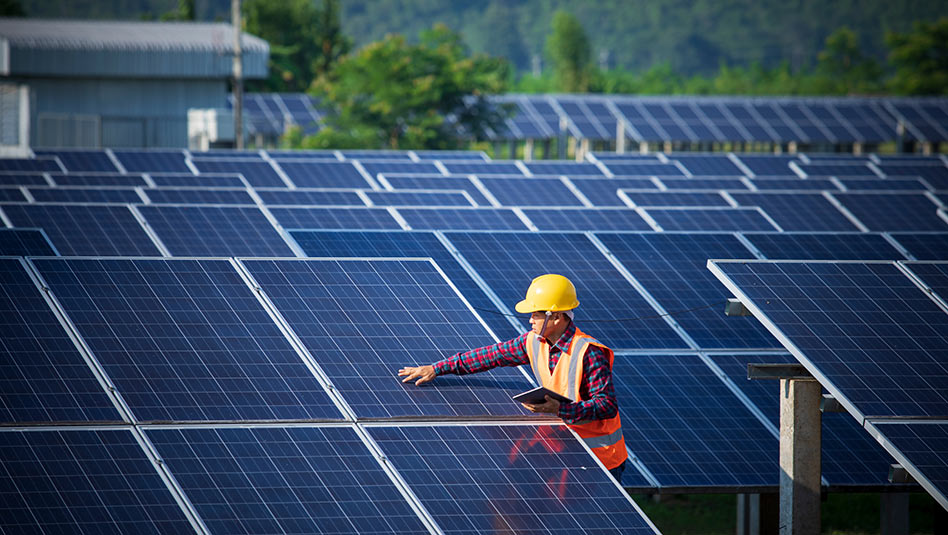
The previous article discussed the opening of the country for foreign ownership that paved the way for much-needed investments in renewable energy. This time, we will tackle how this investment can benefit the country.
As private sector investments continue to pour in and relevant government laws are in place, the road to renewable energy (RE) development seems to be clearing, especially for foreign investors. Just for the first 10 months of the year, investments in RE have reached PHP 558.83 billion.
With billions of dollars on the line, the key questions now: are all these investments worth the cost and does the change to RE contribute to mitigating the effects of climate change as far as the Philippines is concerned?
The previous article discussed the opening of the country for foreign ownership that paved the way for much-needed investments in renewable energy. This time, we will tackle how this investment can benefit the country.
As private sector investments continue to pour in and relevant government laws are in place, the road to renewable energy (RE) development seems to be clearing, especially for foreign investors. Just for the first 10 months of the year, investments in RE have reached PHP 558.83 billion.
With billions of dollars on the line, the key questions now: are all these investments worth the cost and does the change to RE contribute to mitigating the effects of climate change as far as the Philippines is concerned?
Energy savings and self-sufficiency
The bright prospects awaiting solar and wind power energy were discussed in the previous article, potentially adding 27,357MW and 14,988 MW respectively into the power mix by 2030.
Contrary to criticisms on renewable energy sources being costly, the cost of solar power systems has been drastically reduced amid technological innovations and prior surplus in solar equipment. As of 2021, solar PV module cost has dropped by 80% versus 2011. This led to an increase in residential demand along with the implementation of net-metering.
Moreover, electricity generation cost from solar power plants appears cheaper than traditional sources. For instance, in Manila Electric Company’s (Meralco) breakdown of generation charge, average generation cost from solar power suppliers cost less than the generation cost from coal and natural gas power plants (see table below). This can also be said for geothermal and mix sourced power plants.
Breakdown of generation charge (average from March* to September)
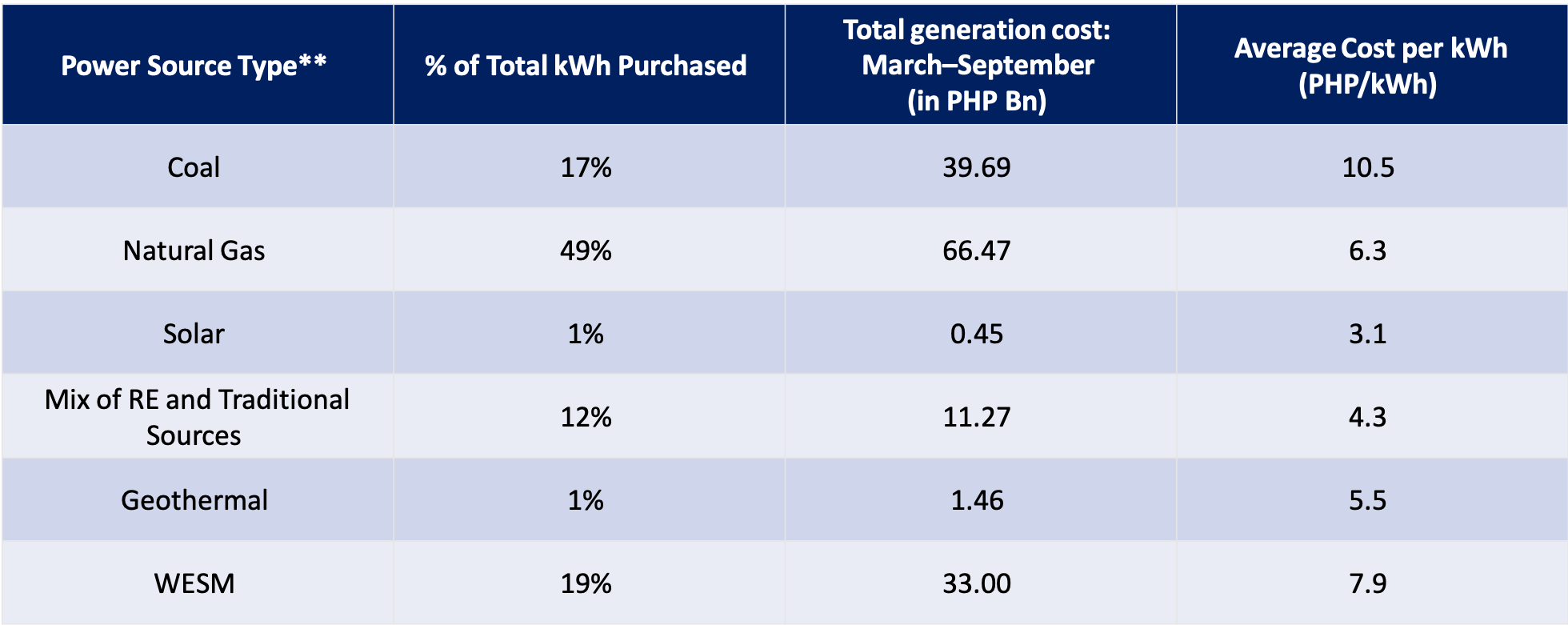
Notes: *Solar power sources included from March onwards; **based on bilateral contracts with power suppliers. Source: Meralco Rate Archives, March 2023 – September 2023
One of the key RE goals of the government is energy self-sufficiency, that is, the capacity of the country to generate its own power supply without the need for raw materials.
Globally, RE is becoming the cheapest form of electricity generation and the price of electricity coming from RE sources have been dropping significantly.
Adoption of renewable energy as power sources in rural areas also presents opportunities for energy savings and self-sufficiency, especially in areas dependent on generators which are also vulnerable to volatile oil prices.
Renewable energy also opens doors for business growth in these areas, especially for enterprises and industries highly dependent on energy use.
Welfare benefits: More employment in the energy sector
According to International Renewable Energy Agency (IRENA), the Philippines was estimated to have 189,000 people working in its RE sector. With the aggressive shift towards green energy, the power generation sector is expected to see a surge in employment in the coming years.
Just last August, Department of Labor secretary Bienvenido Laguesma said that RE investment`s in the Philippines would generate new 75,000 jobs.
Laguesma stressed that his department is coordinating with the Department of Energy (DOE) and Departments of Trade and Industry in developing RE-enhanced jobs to fulfill the workforce needs of foreign investor-backed projects.
IRENA said that a jobs boom is common in countries where RE projects are being implemented. Currently, there are over 12.7 million people in the world who are working in the RE sector, with most being in Asia.
Climate mitigation

But the ultimate beneficiary of transitioning to RE is the environment. Currently, the world is on track to breaching the 2 degrees Celsius threshold—a number considered by climate scientists as the highest bearable increase in global temperature. According to the International Panel on Climate Change (IPCC), if warming rises to 2 degrees Celsius, the effects on global weather patterns can be devastating to all countries, from more powerful typhoon seasons to longer and hotter dry seasons—by the next decade.
The hope is that moving immediately to RE sources can slow down climate change as REs have lesser carbon footprint, producing far less greenhouse gases, which are the primary culprits in causing changing the climate. Under the DOE’s NREP, the goal is to reduce the country’s greenhouse gas emissions by as much as 75% by 2030—still a tall order considering that the current greenhouse gas emission of the whole country was at 130.4 million tons of carbon dioxide equivalent (MTCO2e), as reported by the DOE itself. Nonetheless, we are on the right track.
By investing in renewable energy, the Philippines can mitigate climate change, reduce electricity costs, improve air quality, and foster a healthier country for the next generation.
ALEXANDER VILLAFANIA is a writer for Metrobank’s Wealth Insights. For almost 20 years, he authored stories on science, technology, and education as a journalist for several local news organizations. He has since transitioned to writing more about financial literacy.
INA JUDITH CALABIO is a Research & Business Analytics Officer at Metrobank in charge of the bank’s research on industries. She loves OPM and you’ll occasionally find her at the front row at the gigs of her favorite bands.






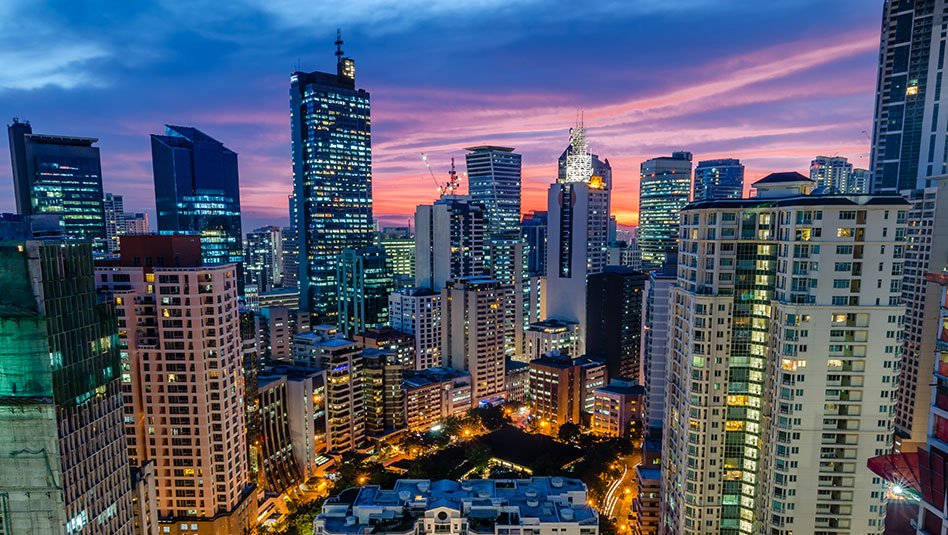
 DOWNLOAD
DOWNLOAD
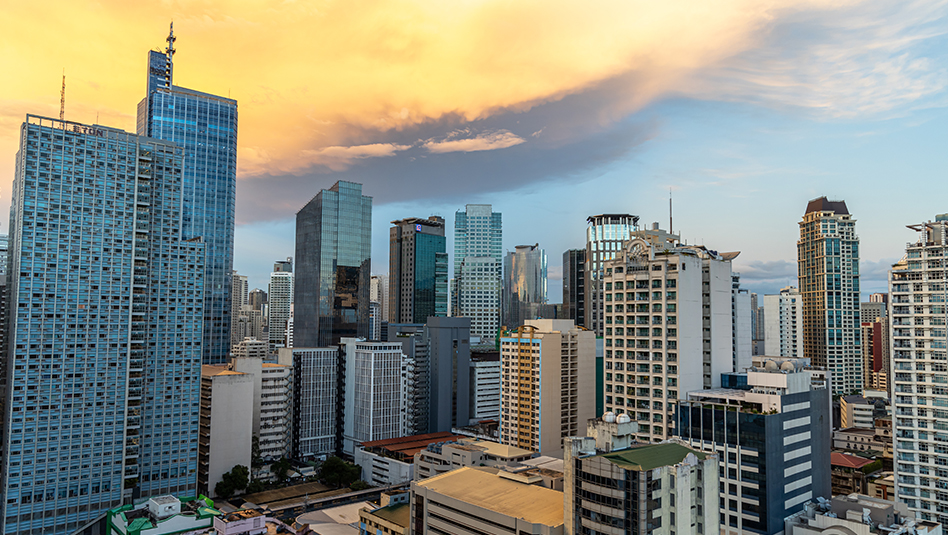
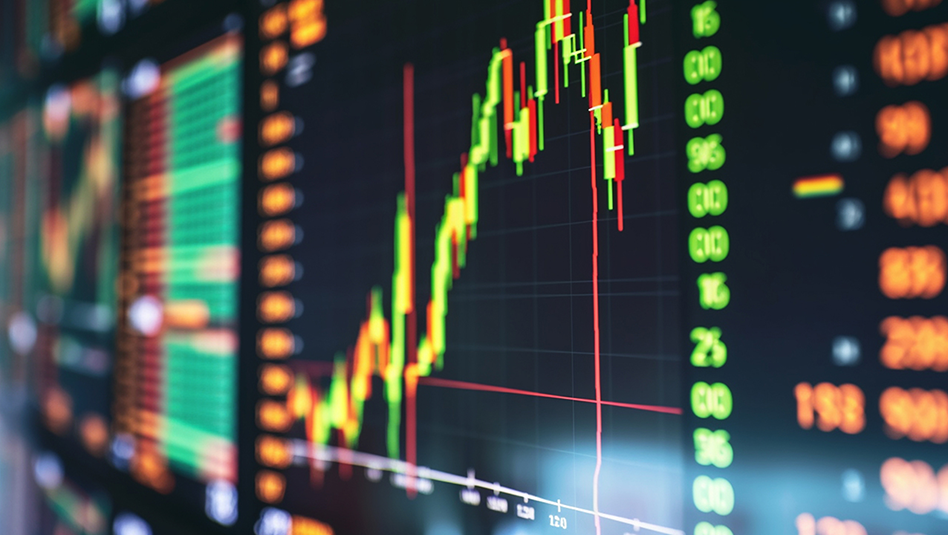


 By Ina Judith Calabio and Alexander Villafania
By Ina Judith Calabio and Alexander Villafania